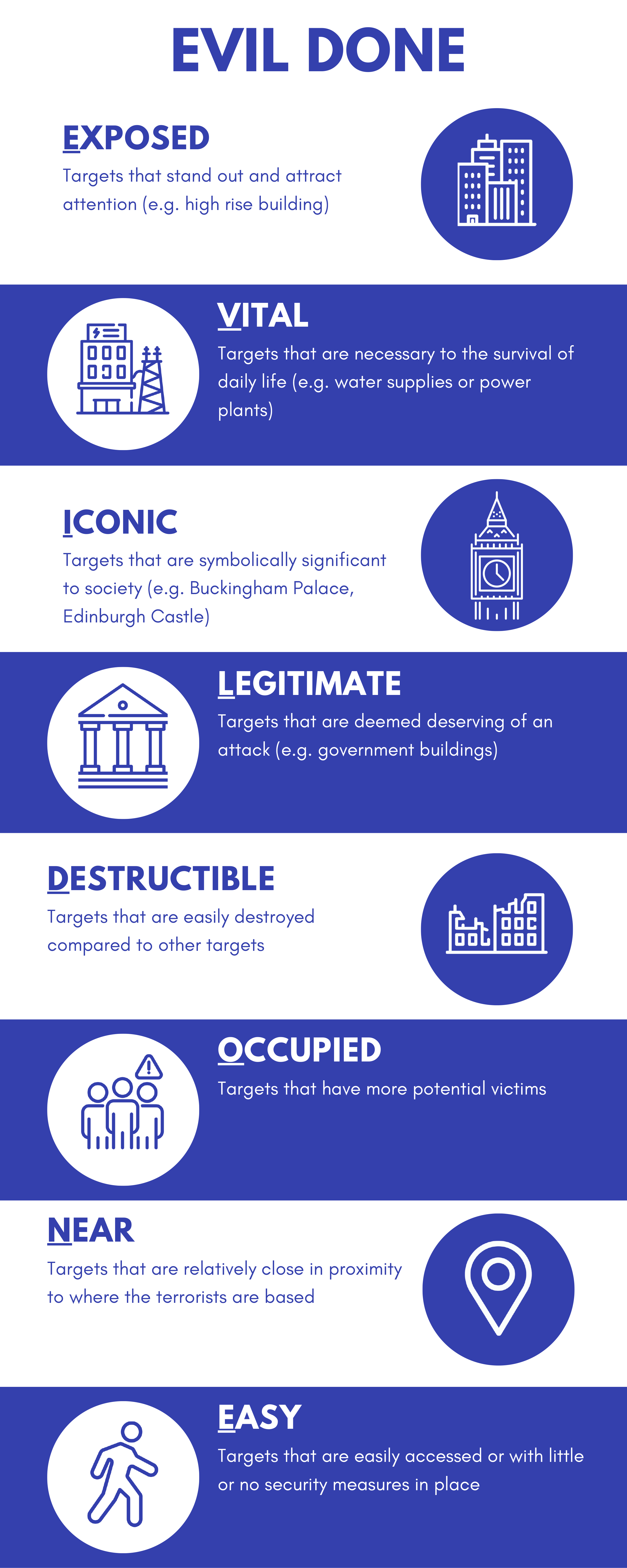To further explore this area, NaCTSO commissioned Coventry University to investigate whether a prominent risk assessment framework, known by the acronym ‘EVIL DONE’, can be used to identify attractive and vulnerable targets within a UK context.
Targets and their vulnerabilities to terrorism are continuously changing, making it necessary to continually review our understanding of target vulnerability and attractiveness.
To facilitate such an understanding, academics have drawn on crime theories to establish new ways of understanding terrorism prevention and mitigation. This has included evaluations of place-based theories, such as Situational Crime Prevention (SCP), which focus on reducing opportunities in settings where crime occurs rather than focusing on the individuals.
One of the most influential contributions to this area has been Clarke and Newman’s 2006 work, Outsmarting the Terrorists, which presented a systematic approach for reducing opportunities for terrorism. Using established SCP techniques, the authors advocated for interventions aimed at protecting the most vulnerable targets and devised a risk assessment framework to help practitioners identify these locations.
The framework, known by the acronym ‘EVIL DONE’, proposed that the most vulnerable/ attractive targets were:

Since the publication of Outsmarting the Terrorists, there have been over 60 articles exploring the utility of SCP to terrorism, including several investigations to understand if ‘EVIL DONE’ has the capacity to predict target attractiveness and vulnerability. Despite this interest, there has been a limited amount of testing of ‘EVIL DONE’ and the new threat landscape has resulted in calls to revise the framework’s scope.
Guided by this prior research, and driven by a commitment to Evidence-Based Policing, the Research and Product Development Unit (R&PDU) commissioned Coventry University to explore the relevance of ‘EVIL DONE’ to the current UK threat landscape.
The research aimed to provide NaCTSO with a renewed understanding of the framework following a shift in targeting, from Publicly Accessible Locations (PALs) to Venues and Public Spaces (VaPS), and sought to explore its usefulness in identifying sites of highest risk.
The findings of the research reveal that EVIL DONE has some relevance and may be useful in explaining the attractiveness of targets in the context of Great Britain. However, the framework was found to be less relevant in the context of Northern Ireland-related cases.
A summary of the research findings can be accessed here.
